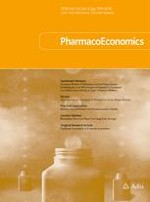Published in:

01-09-2006 | Original Research Article
Impacts of Cost Containment Strategies on Pharmaceutical Expenditures of the National Health Insurance in Taiwan, 1996–2003
Authors:
Dr Yue-Chune Lee, Ming-Chin Yang, Yu-Tung Huang, Chien-Hsiang Liu, Sun-Bing Chen
Published in:
PharmacoEconomics
|
Issue 9/2006
Login to get access
Abstract
Introduction: Pharmaceutical expenditure (PE) of the National Health Insurance (NHI) programme in Taiwan grew from 62.2 billion Taiwan new dollars ($NT) in 1996 to $NT94.5 billion in 2003.The government has been introducing many strategies to control PE since the inception of NHI including price adjustment based on the prices of international products or existing products (inter-brands comparison), or market price and volume survey; delegation of financial responsibility to regional bureaux; co-payment for outpatient drugs; generic grouping (the reference pricing scheme based on chemical equivalence); a global budget payment system for clinics and hospitals; and reduction in the flat daily payment rate of the drugs for clinics. The aim of this study was to evaluate the impact of these cost containment strategies on the PE of the NHI programme from 1996 to 2003.
Methods: To take the growth and seasonal trends of monthly PE into consideration, Box and Tiao’s time-series event intervention analysis based on the Box-Jenkins auto-regressive integrated moving-average model was applied to evaluate the impact of various cost containment strategies on total and subsector (outpatient, inpatient, clinic and hospital sectors) PE. Monthly data of PE of the NHI programme from 1996 to 2003 (the dependent variables) were obtained from the Bureau of the NHI. Drugs prescribed by dentists and Chinese medical doctors at outpatient departments were excluded.
Results: After fitting the patterns of time series and controlling for the calendar effect of the Chinese New Year and the severe acute respiratory syndrome outbreak in 2003, three strategies (generic grouping, delegation of financial responsibility and reduction of the flat payment rate of clinics) were significantly associated with a reduction in PE. However, the hospital global budget strategy offset partial savings from these three strategies. Cumulative savings during the study period were estimated to be $NT25.442 billion ($US0.80 billion). Of all the strategies, generic grouping was the most effective although it had less effect on the clinic subsector. Neither drug co-payment nor price adjustment based on the international or inter-brand price comparison had significant impacts on PE.
Conclusion: Generic grouping, reduction of the flat payment rate and delegation of financial responsibility were effective in controlling PE. A global budget alone would be unable to control PE without other direct financial incentives. Neither drug co-payment nor brand-specific price adjustment based on prices of international/ existing products had a significant impact on PE.